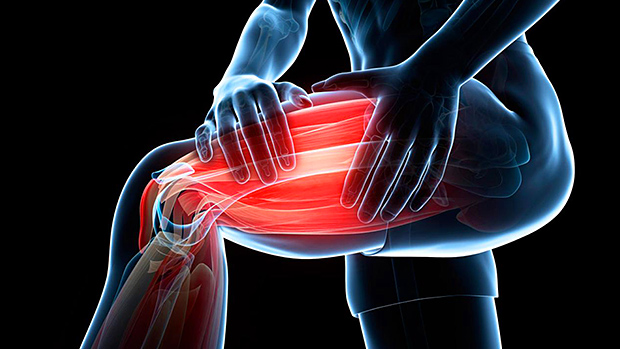Pain is a complicated and diverse feeling that differs widely across people. Understanding the various forms of pain is critical to efficient management and therapy. In this thorough post, we will look at the many forms of pain, such as acute, chronic, neuropathic, and more, and provide deep insights to help you understand the intricacies of each.
Acute pain.
Acute pain is characterized by its quick onset and severe nature. It acts as a warning signal for sickness or a hazard to the body. Acute pain is often the consequence of an accident, surgery, or disease, and it usually goes away after the underlying cause is addressed.
Etadol 100mg is an effective medication recognized for its ability to relieve pain and inflammation. This medication’s primary component, Etadol, provides comfort to those suffering from a variety of pain, including arthritis, migraines, and post-operative pain. Understanding how Etadol 100mg works and its advantages is critical for people looking for effective pain relief options.
Features of Acute Pain
- Duration: Short, generally shorter than three to six months.
- intensity may vary from modest to extreme.
- Onset is sudden and generally associated with a particular incident or injury.
- Function: Protective, directing the body to take measures to avoid additional injury.
- Common causes of acute pain include fractures, sprains, and cuts.
- Procedures: Postoperative discomfort is a typical case.
- Illnesses include acute diseases such as appendicitis and infections.
Managing acute pain
Analgesics, anti-inflammatory medicines, and physical treatments are all effective treatment options. Timely treatment of the underlying cause is critical to avoiding the progression to chronic pain.
Chronic pain.
Chronic pain lasts for an extended period of time, often more than three to six months, and may linger even after the injury or disease that caused it has healed. This sort of pain is debilitating and has a substantial influence on a person’s quality of life.
Characteristics of Chronic Pain
Duration: long-term, lasting beyond the usual recovery time.
Intensity: can fluctuate, often varying with time.
Impact: influences everyday activities, emotional well-being, and general quality of life.
role: often has no protective role and might be considered a sickness in and of itself.
Common causes of chronic pain include arthritis, fibromyalgia, and lower back pain.
Nerve damage: caused by illnesses such as diabetes or trauma.
Cancer: pain caused by tumors and cancer therapies.
Chronic pain management frequently involves a multidisciplinary approach, including medication, physical therapy, psychological support, and surgical procedures. Chronic pain treatment aims to enhance function and quality of life.
Asmanol 100 mg is a medicine used to relieve pain. It includes a particular active component that is intended to relieve many forms of pain, including acute and chronic pain. The actual content of Asmanol may vary based on the manufacturer and region of distribution. Typically, such drugs are used to treat muscular pain, joint pain, and postoperative pain.
neuropathic pain
Neuropathic pain is caused by an injury or malfunction of the neurological system. Unlike nociceptive pain, which stems from tissue injury, neuropathic pain is produced by anomalies in the way nerves receive pain signals.
Neuropathic pain is often characterized as searing, shooting, or stabbing.
The location may be either vast or confined.
Hyperalgesia is characterized by increased sensitivity to pain, whereas allodynia is characterized by discomfort from ordinarily non-painful stimuli.
Common causes of neuropathic pain.
Diabetic neuropathy is a prevalent reason.
damage includes spinal cord damage and nerve trauma.
Infections include shingles (postherpetic neuralgia).
Tapentadol, an opioid analgesic used to treat moderate to severe pain, is marketed under the brand name Noosanta 100 mg. Tapentadol acts as a μ-opioid receptor agonist and norepinephrine reuptake inhibitor, altering the brain’s reaction to pain and delivering excellent pain relief.
Neurological disorders: conditions such as multiple sclerosis.
Treatment options for neuropathic pain include medicines, nerve blocks, and physical treatments. Novel therapies, such as neuromodulation and regenerative medicine, are also being investigated.
Other pain types include nociceptive pain.
Nociceptive pain is generated by tissue injury and is often characterized as acute, painful, or throbbing. It may be classified into two categories:
Somatic pain originates in the skin, muscles, and soft tissues.
Visceral pain comes from inside the organs.
Inflammatory pain.
Inflammatory pain is a kind of nociceptive pain caused by inflammation, and it is often encountered in illnesses such as rheumatoid arthritis. It is distinguished by swelling, redness, and heat in the afflicted region.
Functional Pain
Functional pain occurs when there is no clear physical cause or particular nerve injury. This group includes conditions like as irritable bowel syndrome (IBS) and fibromyalgia, where discomfort is thought to be caused by aberrant neural system activity.
Psychogenic Pain
Psychogenic pain is linked to psychological variables. While it may have a physical cause, it is aggravated by emotional or mental variables like stress and worry.
Conclusion
Understanding the various forms of pain is necessary for accurate diagnosis and therapy. Each form of pain has distinct features that need individualized care solutions. From acute to chronic, neuropathic to nociceptive, and beyond, a multifaceted strategy is required to reduce suffering and enhance the quality of life for people suffering from pain.





